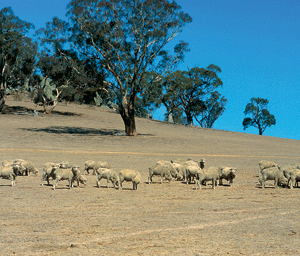
|
Published: 7 November 2011
‘Factory’ that makes water from waste wins gold
The Gippsland Water Factory, the winner of this year’s Gold Banksia Award for excellence in environmental practice, is an innovative water treatment system that has replaced a 40-km open drain sewer in Victoria’s central Gippsland region.

|
|
Gippsland Water Factory’s ‘Vortex’ – a community education facility – also won a Banksia award for its innovation and use of interactive displays. Credit:
Gippsland Water Factory
|
By recycling the wastewater from 11 local towns for re-use, the facility helps conserve water in local rivers and reservoirs.
The design of the wastewater treatment and water recycling system minimises energy and chemical consumption. Gippsland Water also imposed a carbon-cost incentive, to minimise the facility’s carbon emissions and remove fugitive methane releases.
Apart from the Gold Banksia Award, the project won its ‘Water’ category award as well as the Banksia Education Award for its interactive community educational centre known as ‘the Vortex’.
Other winners of the 2011 awards included:
-
Bill Thomas, Head of Sustainable Practice, Bentleigh Secondary College, Victoria, for a water harvesting, storage and efficiency program that cut the school’s water use by 93 per cent over four years
-
Lindsay Soutar, 100% Renewable Community Campaign, NSW (Environment Minister's Young Environmentalist of the Year award)
-
‘Peak Phosphorus: the next global food crisis?’, a research project by the Institute for Sustainable Futures, NSW
-
SustainAbility Stars, E.W. Tipping Foundation, Victoria, a project that has been enabling people with disability to achieve reductions in domestic energy, water and waste
-
Zoos Victoria’s ‘Don't Palm us Off’ campaign for palm-oil labelling of consumer products in Australia (Banksia People's Choice Award)
The Banksia Award for best indigenous project went to the ‘West Arnhem Land Fire Abatement Partnership’. The judging panel commended the integration of traditional knowledge and contemporary scientific practice through an effective partnership between government, universities, research groups and Indigenous people, who are employed as rangers under the project.
From 2006 to 2010 the Indigenous partners involved in this project abated 706 956 tonnes carbon dioxide equivalent (CO2e). Its success has inspired other Indigenous groups across north Australia and stimulated further research on managing the Top End’s fire regime for biodiversity conservation and economic benefits.
Source: Banksia Environmental Foundation/Gippsland Water Factory



